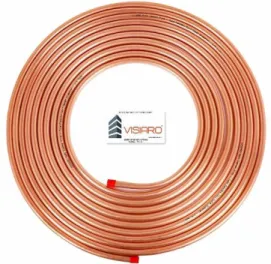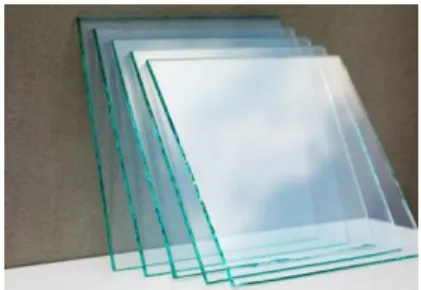A report submitted to the Department of Mechanical Engineering, Sonargaon University, Bangladesh partially fulfilled the requirements for. We declare that this project is our own work and has not been submitted elsewhere for the award of a degree or degree. The author would like to thank Sonargoan University for all their support to this research.
This paper focuses on the analysis of the three types of solar thermal collectors (flat plate, line focusing and point focusing), their developments and contributions in the field of solar thermal collectors with an emphasis on the material heat transfer properties and challenges for the production of solar materials. Moreover, it gives detailed information about the types of materials used in the coating of solar thermal collectors and their selection according to application requirements. The material proper selection leads to the improvement of the efficiency and effectiveness of thermal solar energy collectors, user satisfaction and lifetime of solar energy collectors.
ASHRAE American Society of Heating and Air Conditioning Engineers SSTES Seasonal Solar Thermal Energy Storage.
- Basic Information
- Solar water heating system components
- Objective of the project
- Literature preview
Based on their results, it is recommended that the window to wall ratio can be increased to (40-60)% if the window's heat transfer coefficient or U-value would be ranged for. They showed that the optimal window to wall ratio is between 35% and 45% with different orientations of the building. The result revealed that high g-value and large window-to-wall ratio for south-facing houses are less useful in reducing the house's space heating demand.
Indeed, a significant part of the cost of solar equipment is covered by the cost of the collectors. Solar water heaters are an extension of solar collectors and are the simplest solar energy devices.
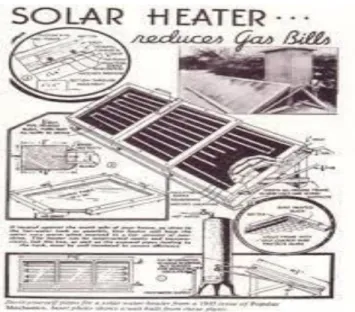
- Introduction…
- Methodology
- Solar water heating system components
- Solar controller …
- Flat plate collector
- Evacuated tube collector
- Batch or integral collector
- Storage Tank
- Heat Exchange …
- Pump
- Pipe
- Heat Transfer Fluid
- Thermocouple
- Glass sheet
- Types of a solar heating system
- Active solar hot water system
The output result of the thermal model is compared with the monthly electricity bill which showed a good agreement to know the annual load consumption of all the appliances of the house. Various software and techniques are available in the literature to make the thermal analysis of the house. After comparing the electricity bills with actual utility bills, they concluded that climatic conditions and the existing house materials have a significant effect on the energy efficiency of the single-family home.
The result showed that the occupants' time consumption, indoor temperature, efficiency of household appliances and thermal properties of the apartment strongly contribute to the change in daily electricity consumption. They emphasized the need to install better roof insulation in the house, as this feature of the house can reduce the heating load by up to 75% and the cooling load by up to 45.5%. The aim of the project is to design a cost-effective and high-efficiency device, when we use technical support from various sources to achieve our goal, we need a thermocouple and a small LED display to display the temperature, and we use a 6-volt battery for power.
Some factors contributed to the proper and efficient design of the heat exchanger and characterized by the working fluid, flow rate, inlet and outlet temperature of all fluids [9] [10]. The pump is one of the crucial components of a solar water heating system to circulate the hot water or glycol solution from the collector to the storage tank. Most of the solar system uses the centrifugal pump, and in our research a centrifugal type constant speed pump was used.
This pump was chosen because it was able to fulfill some crucial functions and design criteria such as system flow rate, pump power consumption, system type, operating temperature, friction loss and type of heat transfer fluid [11] [12]. The choice of the right pipe system depends on pressure and temperature classification, jointing and ease of manufacture, availability, resistance to corrosion, type of application, life of the material and installation, etc. Apart from the description of the above essential components, a solar water heating system with different kinds of values , control strategy, temperature and pressure sensor, etc.
When the junction of the two metals is heated or cooled, a voltage is created that can be inversely correlated with the temperature. It is remembered that the heat exchanger coil must be placed in the lower half of the storage tank to accurately change the heat [17].
![Figure 2.1: Solar water heating system [2]](https://thumb-ap.123doks.com/thumbv2/filepdfnet/10719332.0/23.893.216.700.629.990/figure-2-1-solar-water-heating-system-2.webp)
Introduction
Site selection
From the thermal analysis of the house, the total electricity demand is found to be around 19511. 9] designed and simulated a solar thermal system with seasonal storage as part of the C-RISE project. It must be remembered that the heat exchanger coil must be placed in the lower half of the storage tank for accurate heat exchange.
Figure (3.15) determines the supplied heating energy and the room temperature of the building for the designed system. System performance and efficiency depend on the perfect sizing of each system's components. In order to correctly design the size of the solar collector, different equations from the literature we have reviewed have been used that can meet the heating demand of the house space in the heating period.
The simulation results depend on the actual size of the system components and on other values given as inputs to the simulation environment. This system will then meet the space heating demand in the selected home heating periods. This chapter consists of the main contribution of this research work along with the proposed future works for the solar water heating system.
So, extensive cost analysis of the complete system can be done to know the exact initial, operating and maintenance costs. An alternative technique with proper insulation can be used to reduce the energy losses of the standby storage tank and other system components. The installation issue of the proposed system and the appropriate drawings can be done in further work.
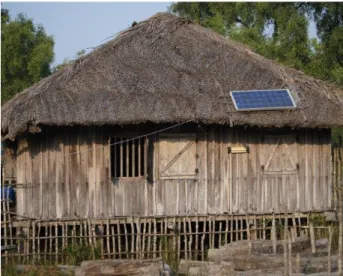
Solar heater for Bangladeshi House…
- Introduction
- Test with Plastic Pipe …
- Test in Open Loop…
- Test in Closed Loop
- Discussion
- Collector Performance
- Collector Efficiency
- Project Overview
Reducing greenhouse gas (GHG) emissions and increasing the use of renewable energy are the main challenges today that can lead to a better environment. 2015), in the residential sector, space heating consumed about 62% of total energy, while space heating consumption is about 55% in commercial use. Of these, the sensible heat storage system is one of the suitable choices due to its cost-effectiveness, longer lifespan, and ease of maintenance. They found that the STES system only covered 52.3% of the space heating demand, but it was able to meet the hot water load throughout the year.
Simulations were done for five years to make the sand-based system reach a steady state and concluded that an effective and efficient SSTES system could meet up to 91% of the building's heating energy demand [5]. 6] with the help of TRNSYS software for covering the demand for space heating and domestic hot water with seasonal storage. After completing a one-year simulation period and comparing the findings with conventional space heating systems, it was observed that the domestic hot water solar fraction and energy saving ratio were about 68.1% and 52% each month, respectively.
On the other hand, the energy storage efficiency of the annual seasonal storage tank was about 64% for space heating. A domestic hot water tank and an underground concrete tank were used to meet the hot water and space heating demand for the selected house. If this happens, the proposed solar space heating system will be useful to provide thermal energy in the houses.
The room temperature was close to or above 17 ºC during the heating periods, as this was the set temperature for the building, and during the summer months it went higher and reached 22.5 °C due to the relatively lower space heating consumption mentioned in the previous section. The working fluid is one of the essential properties where frost can occur in colder countries. Due to various losses and inefficient collectors, there is a greater need for space heating in the winter months.
In our next phase of research, reducing the overall losses of the system will be the main target. This system can be further customized by controlling the individual components and the cost analysis of the complete system to make it more affordable and reliable.
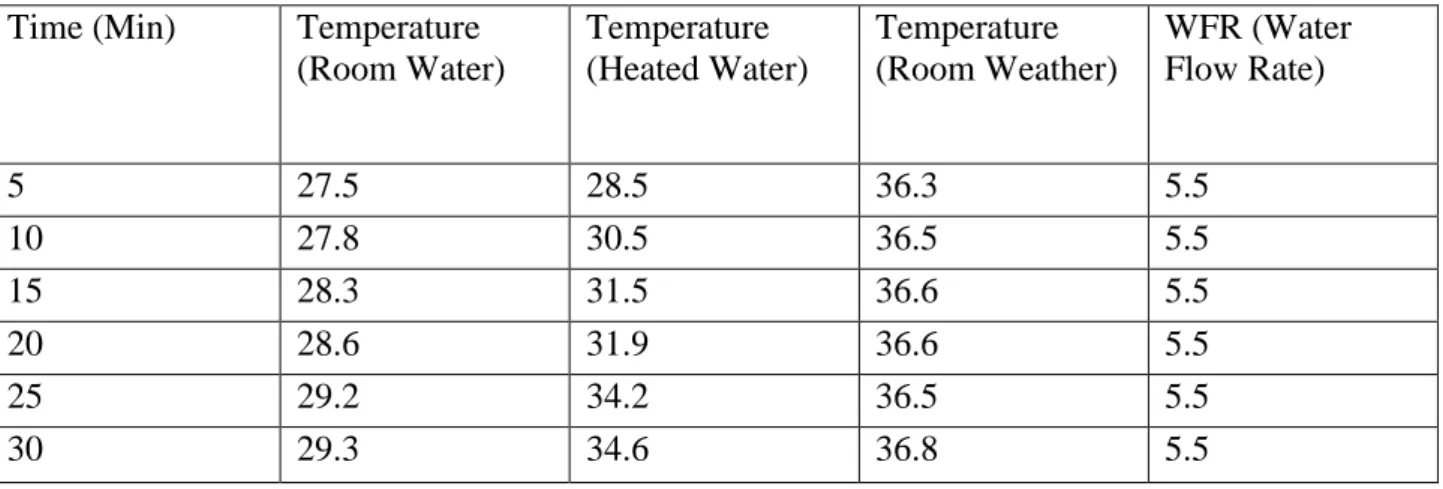
Summary
These aspects help take action to reduce the annual electricity load and make more energy efficient and energy efficient homes. In this thesis, a solar water heating system was designed with seasonal thermal storage, so that a hybrid system can be considered to fully meet the demand for space heating and domestic hot water without using a boiler or heat pump. Research could be done into the design of such a system with a heat pump and check its effectiveness.
In this paper, a dynamic simulation of the space heating system is done, so a complete system including space heating and domestic hot water can be simulated in a few hours. A simulation method or software that can simulate the performance of such a system for one year should be identified. A study is required to determine the effect of snow on solar collectors and a method for removing snow from the collector must be determined.
Martinopoulos, "Simulation of solar thermal systems with seasonal storage for residential scale applications," Procedia Environ. McLeskey, “Modeling of seasonal solar thermal energy storage in a large urban residential building using TRNSYS 16,” Energy Build., vol. 4] "Zeolite thermal storage retains heat indefinitely, absorbs four times more heat than water - ExtremeTech." [Online].
Available: https://www.extremetech.com/extreme/130523-zeolite-thermal-storage-retains-heat-indefinitely-absorbs-four-times-heat-than-water. Wills, "Design and Co-simulation of a Seasonal Solar Thermal System for a Canadian Single-Family Detached House," 2014.
Future scopes…
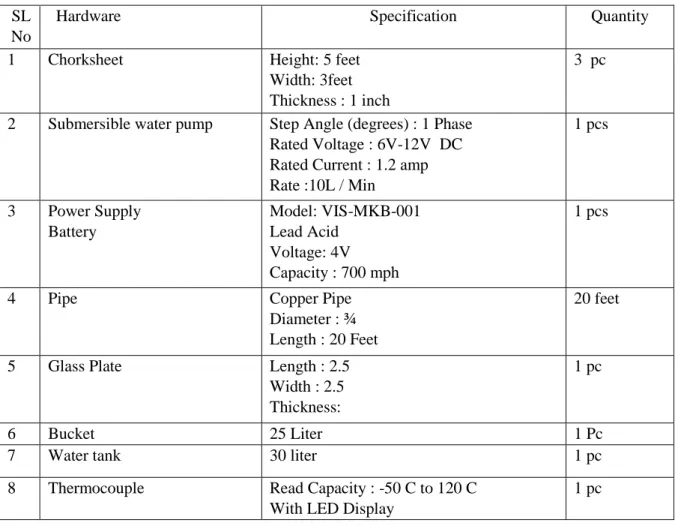
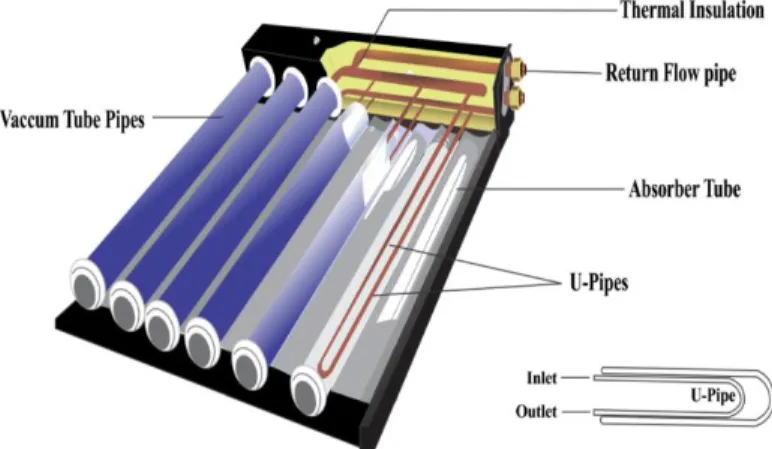
![Figure 2.2: Flat plate collector [6]](https://thumb-ap.123doks.com/thumbv2/filepdfnet/10719332.0/25.893.337.581.240.399/figure-2-2-flat-plate-collector-6.webp)
![Figure 2.4: Batch or integrated collector [8]](https://thumb-ap.123doks.com/thumbv2/filepdfnet/10719332.0/26.893.259.664.206.404/figure-2-4-batch-or-integrated-collector-8.webp)
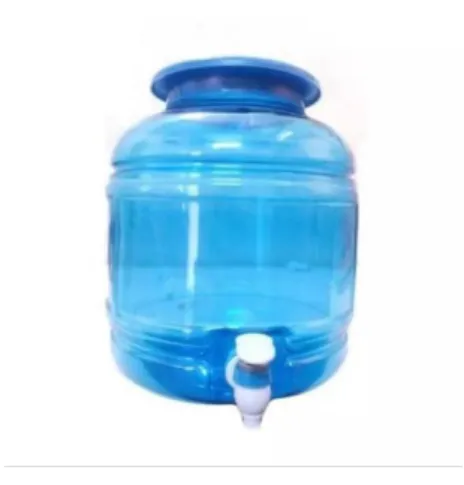
![Figure 2.5: Typical pump for a solar heating system [13]](https://thumb-ap.123doks.com/thumbv2/filepdfnet/10719332.0/27.893.369.535.837.1030/figure-2-5-typical-pump-solar-heating-13.webp)
